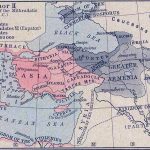The son of Septimius Severus, Marcus Aurelius Antoninus, known by the nickname Caracalla, after the Gallic coat he willingly wore, was greatly fascinated by the figure of king Alexander III of Macedon. His fascination was so great that from what the historian Cassius Dio described, he created troops of legionaries, who not only referred to the formation of troops of the conqueror of the Achaemenid Empire with the name phalangarii, but were also recruited from the territories of Macedonia and Thrace, and even their armament was supposed to imitate Macedonian ones (wearing cloth armour and using long spears).
The latter, of course, could not mean a faithful reconstruction of the Hellenistic phalanx. Rather, they did not differ from many legionaries from the 3rd century, because the spear and oval shield were not the domain of auxiliaries at that time. The set of spears and oval shields in the 3rd century was slowly replacing the set of rectangular shields plus pilum. This may have been related to the increasing conflicts with the Iranian states of the Arsacids and later Sassanids, where the infantry needed weapons that were better against heavy cavalry.
An example from the time of Caracalla is the Battle of Nisibis. Canvas caftans could also serve as independent armour, which could be especially practical in the desert areas of the Middle East fronts. The phalangarii probably included the 2nd Parthica legion and the praetorians, and therefore their number can be estimated at about 15,000 soldiers.







